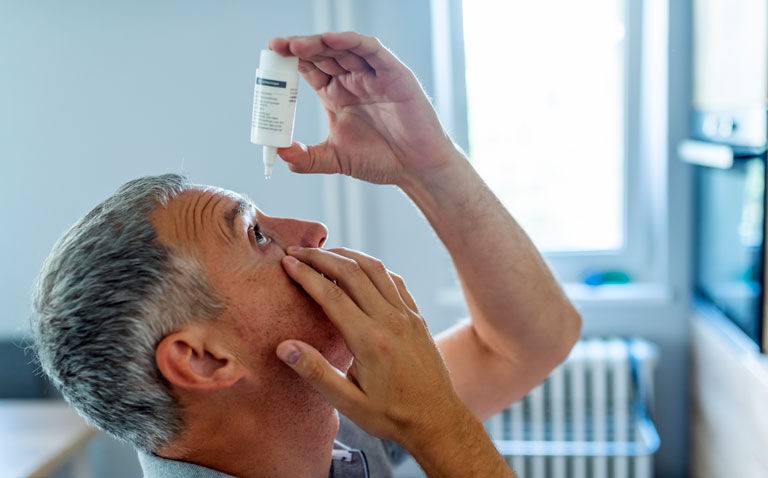Pilocarpine eye drop use for 30 days leads to an improvement in visual acuity compared to placebo for patients with aged-related presbyopia.
The use of pilocarpine 1.25% eye drops once daily for 30 days has been found to significantly improve the vision of patients with presbyopia (near vision) according to the results of a randomised, placebo-controlled trial by a team led by researchers from the Waring Vision Institute, Mt Pleasant, South Carolina, US.
A 2015 estimate suggested that there were 1.8 billion people across the world with presbyopia, among whom, 826 million had an impairment of their near vision due to either a lack of or inadequate, vision correction.
The cause of presbyopia is related to a progressive decrease in the accommodative capacity of the lens and which normally starts to occur around 40 years of age. The current treatment for the condition involves the use of reading glasses or it can be corrected with laser surgery.
Nevertheless, to date, there are no alternates to either glasses or laser treatment although in 2020, an eight-year retrospective study reported on the successful use of a patented eye-drop formulation which contained pilocarpine, in patients with presbyopia.
Pilocarpine is a muscarinic acetylcholine agonist which causes an accommodative response by directly constricting the pupil and stimulating a contraction of the ciliary muscle.
Moreover, in a recent phase 2 phased dose ranging study for the improvement of near vision in individuals with presbyopia, pilocarpine 1% was found to be effective.
Based on the results of the phase 2 study, for the present study, the US team performed a phase 3 randomised trial to compare the efficacy of the optimised formulation of pilocarpine 1.25% (AGN-190584 used in the phase 2 study) against placebo in patients (aged 40 to 55 years) with presbyopia. Individuals were randomised 1:1 to AGN-190584 or placebo and both treatments were used once daily for 30 days. The study outcome measure was the proportion of participants gaining 3 or more lines in mesopic (dim light), high-contrast, binocular distance-corrected near visual acuity (DCNVA) after 30 days at hour 3. Dim light was deliberately chosen for the study because patients with presbyopia have the greatest difficulty reading in dim lighting.
Pilocarpine and visual improvement
A total of 323 patients with a mean age of 49.6 years (72.8% female) were randomised to AGN-190584 (163) or placebo.
The proportion of participants with an improvement of 3 or more lines of mesopic, high-contrast, binocular DCNVA on day 30, hour 3, was 30.7% (AGN-190584) and 8.1% (placebo), giving a difference of 22.5% (95% CI 14.3% – 30.8%, p < 0.001).
When measured on day 30 after 6 hours, the proportion of participants receiving AGN-190584 and achieving the primary outcome was 18.4% compared to 8.8% (placebo). However, after 8 hours there was no significant difference between the two treatments.
Discussing their results, the authors commented on how AGN-190584 had a duration of effect greater than 6 hours. Although night vision was not assessed as part of the study, the authors mentioned how this was the subject of a separate trial.
Citation
Waring GO et al. Safety and Efficacy of AGN-190584 in Individuals With Presbyopia: The GEMINI 1 Phase 3 Randomized Clinical Trial JAMA Opthalmol 2022.










